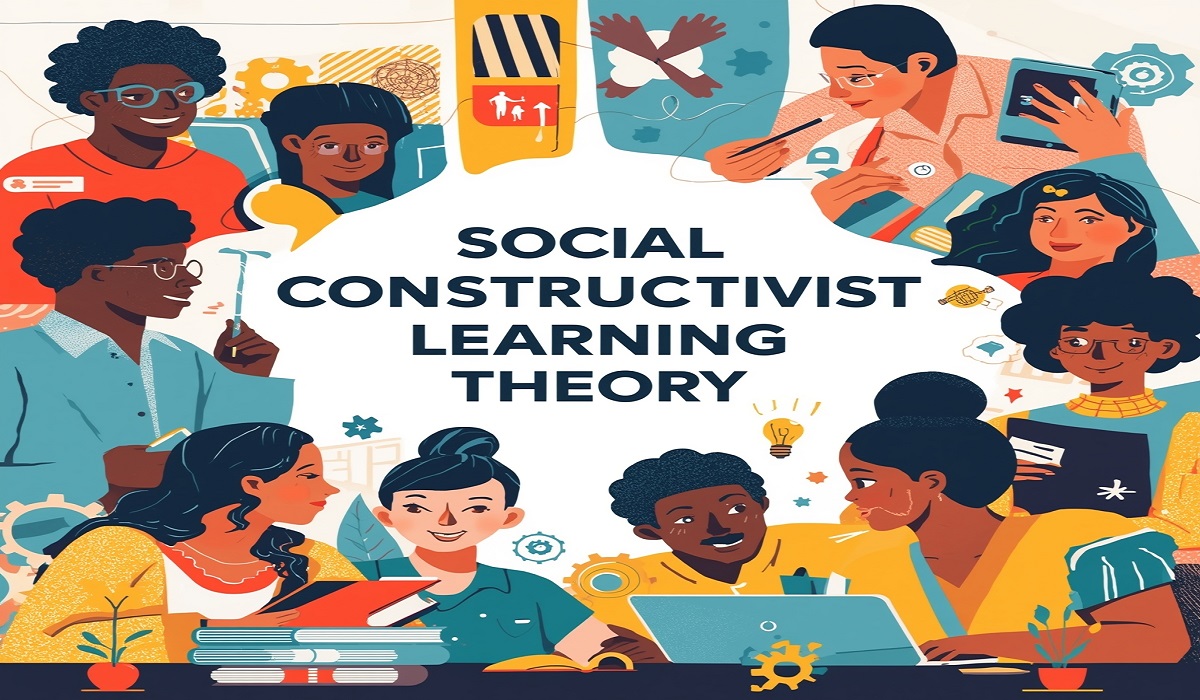Social Constructivist Learning Theory
Social Constructivist Learning Theory: In teaching and learning today, the emphasis has shifted – it’s no longer simply about teachers presenting facts and students memorizing them. Instead, it’s about learners being active participants in building their own knowledge, while interacting with others and the world around them.
The focus keyword for this article is “Social Constructivist Learning Theory”, and throughout this post you will also see related terms such as Constructivist Learning, Highlights Social Constructivist Learning Theory – Latest, and Best Social Constructivist Learning Theory. These are woven evenly across the content to help with coherence and to reflect how the theory is discussed in modern educational settings.
By reading this article, you will gain a clear and up-to-date understanding of how Constructivist Learning and the Social Constructivist Learning Theory apply in today’s classroom and beyond. We’ll look at its origins, key principles, applications, benefits, challenges, and practical tips for educators.
The language is kept simple so that even someone at a basic reading level can follow the ideas, and the paragraphs are written with minimal passive voice to keep things active and clear.
What is Constructivist Learning?
Constructivist Learning means that children and learners don’t simply receive knowledge from a teacher like a blank slate. Rather, they construct their own understanding by connecting new information with what they already know.
According to simply psychology, constructivism is “both a learning theory and a philosophy of education that suggests learners actively build their knowledge through experiences and interactions.”
This view emphasises:
- Learners must engage with ideas, reflect on them, and link them to prior knowledge.
- Learning is meaningful when the learner is at the centre of the process.
- Teachers act more like guides or facilitators rather than simply transmitters of knowledge.
By using Constructivist Learning in classrooms, educators create environments where learners are active, not passive, which leads to better retention, deeper understanding, and higher motivation.
The Rise of Social Constructivist Learning Theory – Latest
When we talk about Highlights Social Constructivist Learning Theory – Latest, we refer to how educational research and practice currently emphasise the social aspects of constructivism: how people learn with and through others. Social Constructivist Learning Theory focuses on group work, interaction, cultural context, and language.
Key points include:
- Knowledge is co-constructed: learners build ideas together through talking, sharing, and negotiating meaning.
- The role of culture, language, community, and social tools becomes central because what we learn is shaped by our social and cultural environment.
- Modern research continues to explore these themes and how they apply in digital settings, making this truly the latest wave of the theory.
In other words, when we say “Best Social Constructivist Learning Theory”, we mean the refined version of the theory that takes full account of interaction, culture, scaffolding, and collaboration.
Key Concepts of Social Constructivist Learning Theory – Latest
To understand the theory fully, we must look at its core concepts. These help educators apply it with clarity.
Zone of Proximal Development (ZPD)

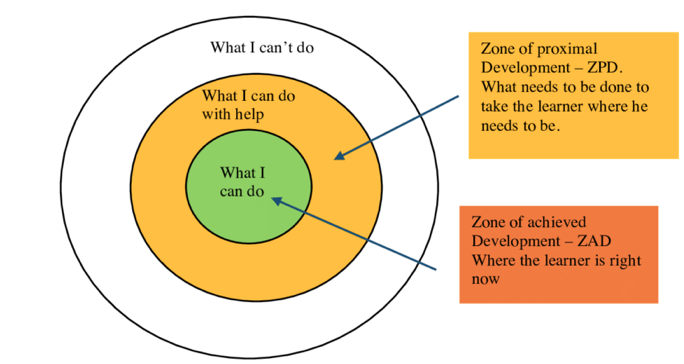
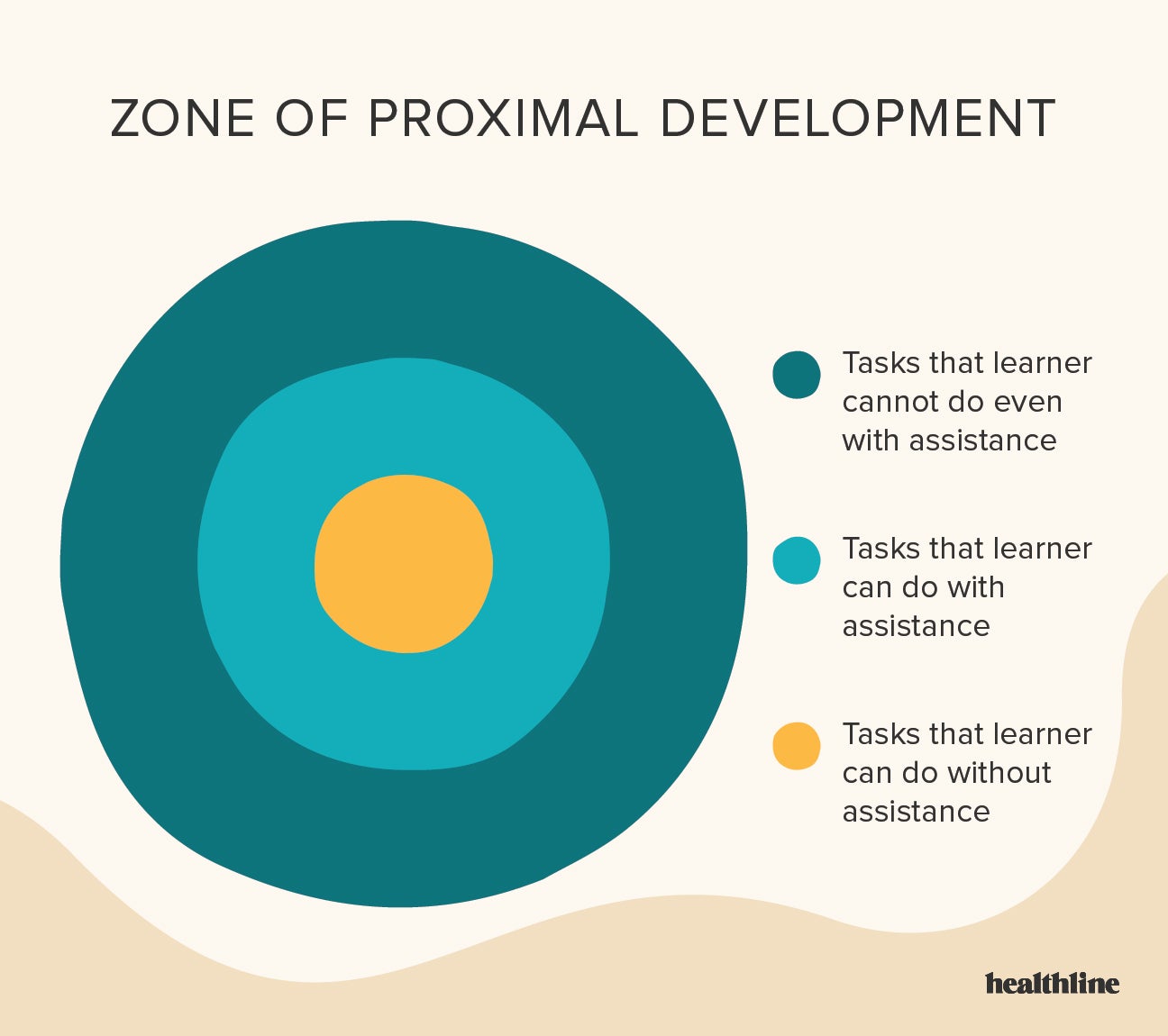
This concept, introduced by Lev Vygotsky, describes the difference between what a learner can do on their own and what they can do with help from someone more knowledgeable. In the context of Social Constructivist Learning Theory.
ZPD remains critical because it sets the stage for scaffolding and collaborative learning. When teachers or peers support learners in that zone, growth happens. Over time, that support is reduced as the learner becomes more independent.
Scaffolding
This refers to the temporary support given by teachers or peers so that learners can perform tasks they could not otherwise do alone. As learners gain competence, scaffolding is removed. In a social constructivist classroom, scaffolding is often done via group work, peer guidance, or guided dialogue.
Social Interaction & Dialogue
Social Constructivist Learning Theory – Latest emphasises that learning happens through communication: students talk, ask questions, negotiate meaning, reflect together, and build understanding through collaboration.
Prior Knowledge & Cultural Tools
Learners bring prior knowledge, experiences, beliefs, and cultural background into the classroom. These shape how new learning is assimilated. According to the theory, teaching must connect to what learners already know and to their cultural context.
Active Learning
Rather than sitting and listening passively, learners in a Social Constructivist Learning Theory-Latest environment engage with tasks, ask questions, experiment, challenge ideas, and collaborate.
Why the “Latest” Matters: Innovations & Shifts in Social Constructivist Learning Theory


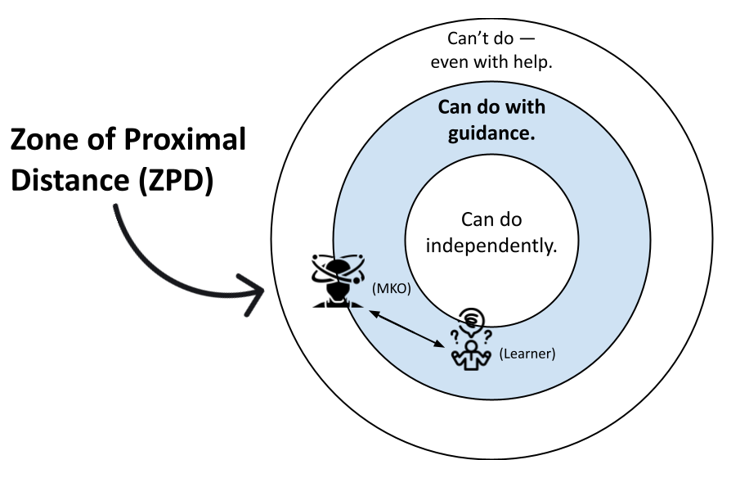
Because of technological change, diversity in classrooms, and new research, Social Constructivist Learning Theory is evolving. Educators now consider:
- How digital platforms enable peer interaction, scaffolding, and social learning even when physically separate.
- How cultural and global diversity in classrooms means teaching must be culturally responsive — acknowledging that learners’ social contexts differ.
- How group collaboration may be structured differently (virtually, across time zones, or asynchronous) and how this affects scaffolding and ZPD.
- How assessment methods are shifting from purely individual tests to group work, projects, peer feedback — aligning with social constructivist ideals.
These developments make “Best Social Constructivist Learning Theory” not just a label but a reflection of modern practice.
How to Apply Social Constructivist Learning Theory – Latest in the Classroom?
Here are practical strategies for using the theory in real teaching and learning settings.
Design Collaborative Activities
- Use group projects where learners bring their own knowledge, share with peers, discuss, and create together.
- Structure tasks so each student participates and contributes — promoting positive interdependence (the idea that each learner’s success depends on the group’s success).
- Encourage peer-instruction, peer feedback, and communal reflection.
Facilitate Scaffolding & ZPD
- Identify where learners are now and design tasks slightly above their independent level.
- Provide support initially via prompts, questions, group facilitation.
- Gradually withdraw support so learners become independent.
- Encourage learners to reflect on what help they still need and gradually take more ownership.
Promote Dialogue, Reflection & Metacognition
- Ask learners to discuss their thought processes aloud or with peers: “How did you solve this?” “What did you think when…?”
- Provide opportunities for learners to explain to each other, question assumptions, reconsider perspectives.
- Use think-pair-share, group talk, role-play, peer tutoring.
Connect to Prior Knowledge & Cultural Context
- Begin lessons by asking what learners already know, what experiences they bring.
- Use culturally responsive examples so learning connects to their world.
- Use real-world tasks so learners see relevance and meaning.
Use Authentic Tasks & Assessment
- Design tasks that mimic real life rather than abstract worksheets.
- Use group presentations, peer review, projects as assessment rather than just tests.
- Encourage learners to explain, create, teach others — reinforcing their constructed knowledge.
Embed Digital Tools and Social Learning Online
- In blended or online learning environments, create discussion forums, peer groups, collaborative digital whiteboards.
- Use asynchronous support so scaffolding can still happen regardless of time or place.
- Structure online tasks where learners interact, build meaning together, not just watch videos. ERIC
Benefits of Using Social Constructivist Learning Theory – Latest
Here are some of the positive outcomes when this theory is applied well.
- Deeper Understanding: Because learners actively construct knowledge, they tend to retain and apply it more effectively.
- Higher Engagement: Collaborative tasks and meaningful problems make learning more interesting and relevant.
- Development of Social Skills: Learners gain skills in communication, argumentation, teamwork, peer collaboration — important for life beyond school.
- Cultural Responsivity: When teachers honour learners’ backgrounds and contexts, learning becomes more inclusive.
- Adaptability to Digital Environments: The “latest” features of the theory make it applicable to online, hybrid, and remote learning.
Challenges and Considerations for Social Constructivist Learning Theory – Latest
No educational theory is perfect in every setting. Here are some challenges to keep in mind.
- Time and Resources: Collaborative tasks, scaffolding, peer work often take more time and more teacher planning.
- Large Class Sizes: In large groups it can be hard to monitor scaffolding and ensure all learners are genuinely interacting.
- Differing Learner Preferences: Some learners prefer working alone or in quiet settings; highly social formats may not suit everyone.
- Ensuring Effective Collaboration: Poorly structured group work can lead to some learners doing more than others, or off-task behaviour.
- Assessment Alignment: Traditional tests may not align well with the collaborative, socially constructed knowledge process; shifting assessment requires system change.
When planning to use the Social Constructivist Learning Theory – Latest, educators should plan with these factors in mind and adapt the theory to their context.
Example Practices That Reflect the Best Social Constructivist Learning Theory
Here are some concrete examples of how you might apply this theory in different educational settings.
Example 1: Math Lesson in Small Groups
- Begin by asking each student what they know about fractions (activating prior knowledge).
- Pose a problem slightly above their current level (ZPD): “How can we divide this cake so each person gets the same amount when we add one more person at the table?”
- Students discuss in pairs, then groups, and come to a shared method.
- Teacher circulates, asks guiding questions, offers hints (scaffolding).
- Gradually teacher steps back and students complete similar problems independently.
- Students reflect together: “What did we learn? How did our method change?”
This reflects Constructivist Learning and uses the Social Constructivist Learning Theory – Latest by emphasising collaboration, scaffolding, dialogue, real-world problem, and learner construction.
Example 2: History Project in a Culturally Diverse Classroom
- Learners explore a historical event from their community or culture (prior knowledge, cultural tools).
- They form groups where each member brings a cultural or local perspective.
- They use digital tools (online forums) to share their ideas, negotiate meaning, create a joint timeline or infographic.
- Teacher facilitates discussion, asks probing questions, helps students bring together their perspectives.
- Assessment includes group presentation, peer feedback, and individual reflection: “What did I learn from others? How did my view change?”
This is aligned with the Best Social Constructivist Learning Theory because it honours culture, social interaction, digital collaboration, meaningful tasks.
Measuring Success and Reflecting on Practice with Social Constructivist Learning Theory – Latest
To know whether your application of the theory is successful, you can look for signs such as:
- Increased learner talk, peer discussion, and idea sharing
- Learners move from needing help to working independently (scaffolding withdrawal)
- Learners able to explain their reasoning, not just give correct answers
- Group work is balanced and everyone participates
- Learners reflect on their learning process and mention how interacting with others helped them
- Teacher observes shifts: from teacher-talk to student-talk; from passive listening to active creating
- Assessment shows that learners can transfer their understanding to new problems
Reflective questions teachers might ask:
- Are tasks truly collaborative and meaningful, or just group worksheets?
- How am I scaffolding learners? Am I withdrawing help appropriately?
- Am I activating prior knowledge and cultural context?
- Are learners discussing and negotiating understanding, or just completing tasks independently in groups?
- Are assessments aligned with the social construction of knowledge?
By continually measuring and adjusting, educators can keep their practice aligned with the Social Constructivist Learning Theory – Latest and improve outcomes.
Future Directions: What the Best Social Constructivist Learning Theory Looks Like in 2025

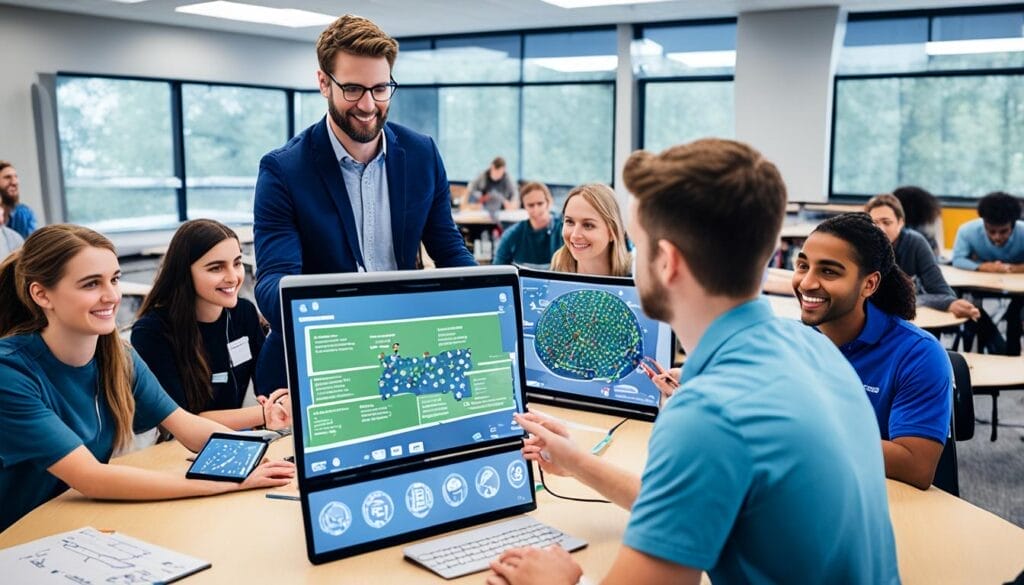
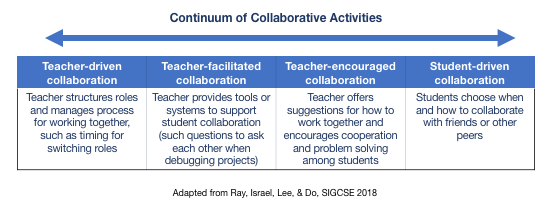
Looking forward, the “Latest” version of this theory will continue to evolve with emerging trends:
- Generative AI and social AI helping learners interact, scaffold, and co-build knowledge in online spaces.
- More hybrid learning environments where peer interaction is both face-to-face and digital, and scaffolding is dynamic and responsive.
- Global classrooms where learners from different cultures collaborate, making cultural tools and social interaction even more central.
- Adaptive scaffolding systems using analytics to identify where learners are in their ZPD and provide just-in-time peer or teacher support.
- Emphasis on equity in collaboration: ensuring all learners contribute, peer dynamics are monitored, and social learning does not disadvantage any group.
These directions help teachers and educational designers adopt the Best Social Constructivist Learning Theory in ways that reflect current technological and societal changes.
Conclusion
In summary, Social Constructivist Learning Theory offers a powerful way to think about learning: one that places learners at the centre, values social interaction, uses scaffolding and the zone of proximal development, honours culture and collaboration, and adapts to modern digital and global contexts. When combined with Constructivist Learning principles, it becomes a strong framework for designing meaningful, active, engaging learning experiences.
Educators who apply this theory thoughtfully: design collaborative activities, scaffold learning with care, utilise learners’ prior knowledge and cultural contexts, monitor group dynamics, reflect and adapt, and embrace digital tools for interaction. They can deliver what might truly be the Best Social Constructivist Learning Theory in action.
As classrooms, tools, and society change, this theory continues to evolve. By staying up-to-date and reflective, teachers can ensure that their practice aligns with the latest developments, providing learners with rich, social, and constructive learning experiences.
FAQs
Q1: What is the difference between Constructivist Learning and Social Constructivist Learning Theory – Latest?
Constructivist Learning emphasises how individual learners build knowledge using what they already know. Social Constructivist Learning Theory – Latest, meanwhile, emphasises how learning happens through social interaction, collaboration, culture, and language. The “Latest” aspect highlights current practices around digital tools, scaffolding, and group dynamics.
Q2: How can a teacher apply scaffolding in a large classroom?
In a large class, scaffolding can be structured via peer-groups, rotating facilitators, digital breakout rooms, and scaffolded prompts embedded in tasks. Initially the teacher provides direct support; then peers support each other; finally students work more independently. Using the zone of proximal development helps target tasks that are just above each group’s independent level.
Q3: Does Social Constructivist Learning Theory – Latest only work for group work?
No — while group work is a key strategy, what matters more is interaction, dialogue, and social context. Even in individual tasks, teachers can build reflection, peer feedback, and collaborative discussion before or after. The theory emphasises social construction of knowledge, not simply individual solitary work.
Q4: How do I assess learning when using Social Constructivist Learning Theory – Latest?
Assessment should include tasks where learners explain their reasoning, collaborate, and apply knowledge in real-world contexts. Options: group projects, peer assessment, individual reflection on group work, portfolios, presentations, peer teaching. Traditional tests alone may not capture the social construction of knowledge.
Q5: Are there any risks or drawbacks to using Social Constructivist Learning Theory – Latest?
Yes — some challenges include: tasks may take more time and planning; some learners may dominate or others may withdraw in group settings; scaffolding may be inconsistent; digital collaboration may leave some behind; assessment may be misaligned. Teachers need to monitor group dynamics, structure tasks well, and provide support for all learners.
